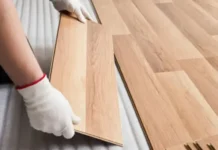The average American pours $1200 per year into their home insurance policy. While that policy covers a lot of potential damage to a home, one of the most claimed benefits for people that live in weather-adverse areas is roof damage.
Whether it’s stripped shingles or outright holes having been formed, roof damage can be a hassle to live with and can severely affect the quality of your life.
If your roof has incurred storm damage, you’ll want to spring into action fast to ensure you can work with your insurer and local contractors to get the issue dealt with and your home back into functional condition.
Not sure where to start when it comes to getting your roof repaired post-storm? Below, our team walks you through a handful of steps that’ll get you on the right track.
- Check for Leaks
A rough storm has blown through and you suspect your roof may have incurred storm damage. Now what?
First, we always recommend that homeowners scrub through their house to see if any water is dripping into its exterior. Water dripping can cause damage to carpets, furniture, and other things you’ll want to remedy as quickly as possible.
Note that these remedies won’t be permanent as the only permanent remedy will be to fix your roof damage which will take time. In the interim, put out a pot or other receptacle to capture falling water and change it out as they fill.
- Inspect Your Roof
Once the storm has passed and the weather has cleared up, it’s time to get a first-hand look at the kind of damage your roof incurred. The best way to do that is to hop on a ladder to see what took place first-hand.
It can be hard for a non-experienced roof assessor to note the full severity of the damage a roof may have incurred. Therefore, no one expects you to craft a detailed diagnostic report. Just write down obvious signs of damage so you can share them with your homeowner’s insurance provider.
- Call Your Insurance Provider
With a rough idea of your roof’s condition in mind, hop on the phone and have a chat with your insurance provider. Chances are, they cover multiple houses in your area and will be prepared to manage your storm damage claim.
It may be that not every aspect of your roof’s repairs will be covered by your policy. Rather than being caught off guard by this and getting upset on the phone, take time to look over your insurance policy before placing your call so you know what to expect.
If your insurer seems to be misinformed regarding your policy, let them know what they have wrong, and be prepared to direct them to a portion of your policy’s details so they can reference it.
- Look Into Covered Contractors
Once you know how your insurer will support you through your storm damage, you’ll need to contact a contractor.
In some cases, your insurer will work with specific contractors they’ll schedule time with on your behalf. In other cases, you’ll be responsible for your contractor search.
As you look into contractors, keep in mind that they’re not all created equal. Lean on reviews and word of mouth recommendations to find a handful of people you may want to engage and take note of them so you can…
- Request Quotes
Once you have a list of prospective contractors in hand, you’ll need to know how much they’re going to charge for your roofing job. The way to achieve that end is to have them come down and quote your job.
When contractors give quotes, they’ll be intentionally vague to protect themselves in case costs go over (and they often do). Ask your contractor if they’ll put their quote in writing and see if they’ll itemize their quote so you can get an idea of how much each piece of your job is costing.
Any contractor that’s vague and won’t quote in writing is a contractor that’s best avoided.
- Check Your Contractor’s License and Insurance
Never have a contractor working on your house that is not licensed to work or insured. An unlicensed contractor may not have the skills necessary to finish your job. Furthermore, your insurance policy may not cover them.
If your contractor doesn’t have business insurance and one of their workers gets hurt on your property, you may end up sued by the employee for damages.
While it’s sometimes awkward to ask for documentation from workers, believe us when we say that doing so can save you a world of headache later down the line.
- Keep Up With Your Team As They Work
With everything worked out regarding your storm roof damage, your contractor, and the scope of your job, all that’s left to do is keep up with your contracting team as they work.
Feel free to ask for updates. Also, check in to see where they’re at with the budget. The more on top of your job you are, the less it’ll be prone to “scope creep”.
Storm Damage Needs to Be Addressed Immediately
When people’s roofs undergo storm damage, many victims don’t want to go through the hassle of dealing with insurers, addressing co-pays, and the like. Hear us when we say that side-stepping your roof repair obligations can lead to more costly issues down the road.
Don’t fall into that trap and do take roof damage seriously. Doing so will save you money and time in the long run.
We welcome you to explore the newest content on our blog for additional guidance on all things real estate.



































































